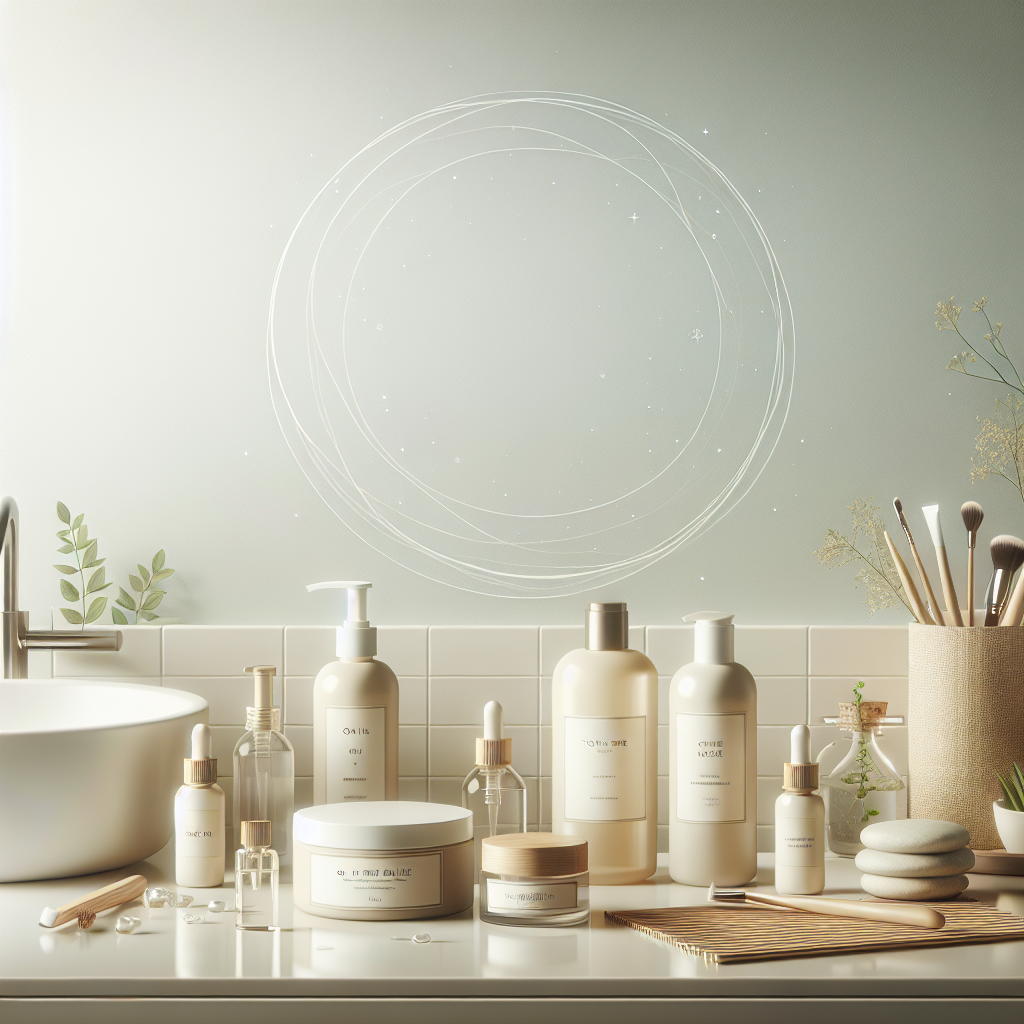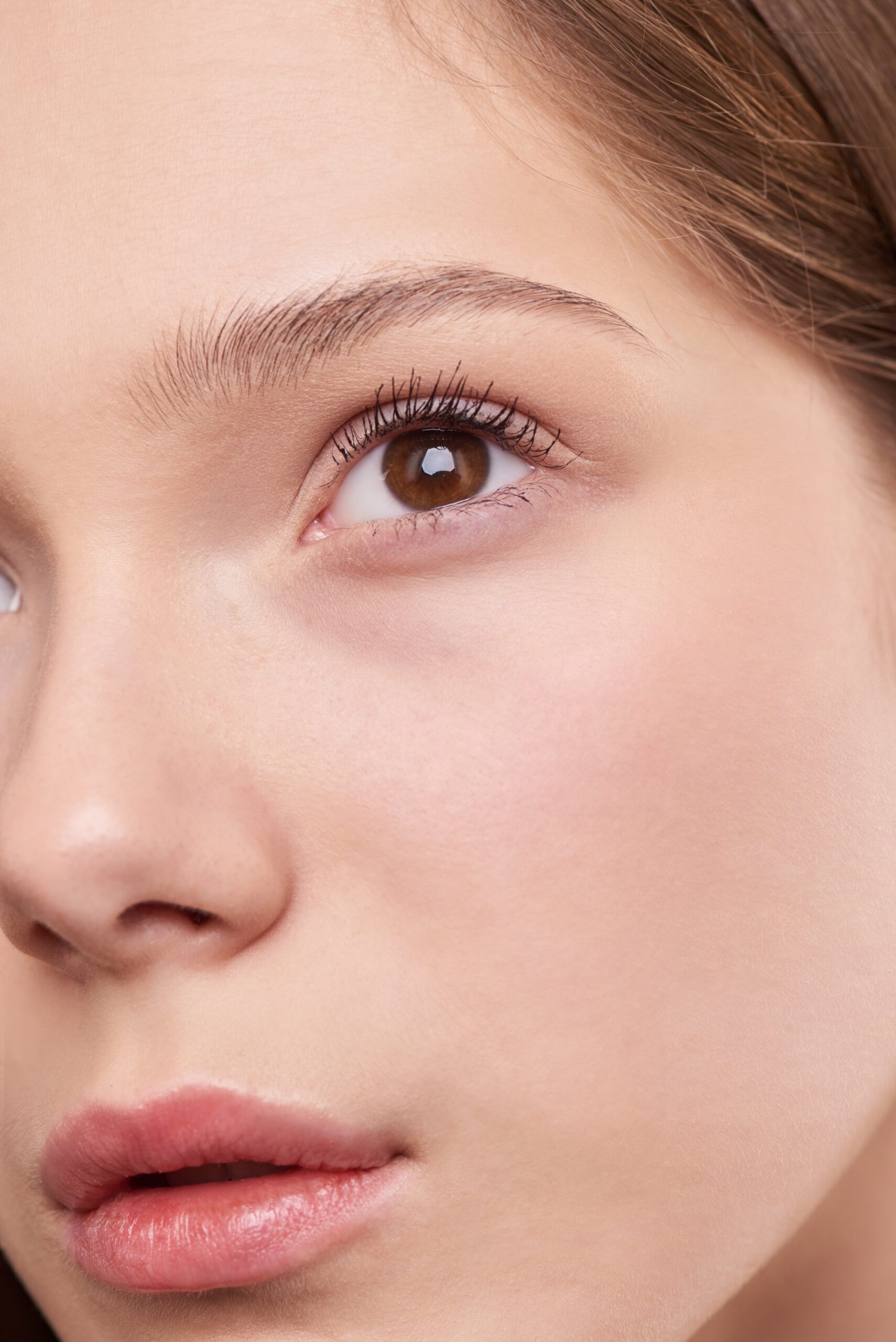If you’re someone who’s tired of dealing with oily skin and those pesky breakouts that come along with it, then you’ve come to the right place. We all know how frustrating it can be to constantly battle shiny skin and sudden eruptions on our face. But fear not! In this article, we’re going to share some simple and effective tips on how you can address your oily skin woes and prevent those unwelcome breakouts from making an appearance. So get ready to bid farewell to excessive shine and hello to a clear, blemish-free complexion!
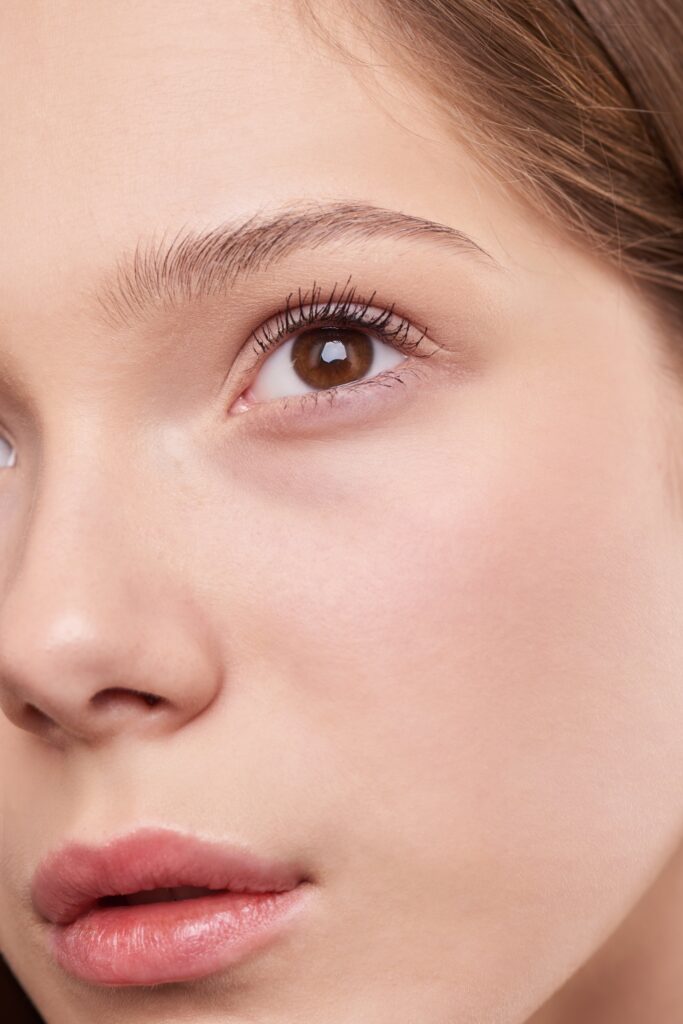
Understanding Oily Skin
Oily skin is a common skin condition characterized by excessive sebum production. Sebum is the natural oil secreted by the sebaceous glands, which are found in the skin’s follicles. While it is normal for the skin to produce some sebum, individuals with oily skin tend to have an overactive sebaceous gland, resulting in an oily complexion.
Causes of Oily Skin
Several factors contribute to oily skin. Hormonal imbalances, particularly during puberty, can trigger the sebaceous glands to produce more sebum. Genetics also play a role, as oily skin can be hereditary. Certain medications, such as hormonal contraceptives or corticosteroids, may also increase sebum production. Additionally, environmental factors like humidity or living in a hot climate can exacerbate oily skin.
Characteristics of Oily Skin
Identifying oily skin is essential for developing an effective skincare routine. People with oily skin often have enlarged pores, which can make the skin look rough or bumpy. Excess oil can lead to frequent breakouts, as the oil clogs the pores and traps bacteria, resulting in acne. Oily skin tends to have a shiny appearance, and makeup may not last as long due to the excess oil production.
Cleansing and Exfoliating
Proper cleansing and exfoliating are crucial for managing oily skin and preventing breakouts. However, it’s essential to strike a balance and avoid overdoing it, as this can strip the skin of its natural moisture and trigger even more oil production.
Choosing the Right Cleanser
When selecting a cleanser for oily skin, opt for one specifically designed for oily or combination skin types. Look for ingredients like salicylic acid or benzoyl peroxide, which can help control oil production and prevent breakouts. Avoid heavy, oil-based cleansers as they can aggravate oily skin.
Using Salicylic Acid Cleansers
Salicylic acid cleansers are particularly beneficial for oily skin. Salicylic acid is a beta-hydroxy acid (BHA) that helps exfoliate the skin and penetrate the pores, clearing out any excess oil or debris. These cleansers can help reduce the appearance of acne and blackheads, leaving the skin looking clearer and less oily.
Gentle Exfoliation
Regular exfoliation is important for removing dead skin cells and preventing clogged pores. However, harsh exfoliants or scrubbing vigorously can irritate the skin and stimulate more oil production. Opt for gentle exfoliants, such as those containing glycolic acid or lactic acid, and limit exfoliation to two or three times a week.
Avoid Overwashing
While it may be tempting to wash your face frequently to combat oily skin, overwashing can actually worsen the issue. Excessive cleansing can strip the skin of its natural oils, leading to increased sebum production to compensate. Stick to washing your face twice a day, using a gentle cleanser, to maintain a healthy balance.
Moisturizing and Hydrating
Contrary to popular belief, moisturizing is essential for oily skin. The right moisturizer can actually help regulate oil production, maintain skin hydration, and prevent excessive sebum secretion.
Choosing the Right Moisturizer
Look for lightweight, oil-free moisturizers specifically formulated for oily or combination skin. These moisturizers are designed to provide hydration without clogging the pores or adding extra shine. Ingredients like hyaluronic acid or glycerin can help replenish moisture levels without triggering excess oil production.
Oil-Free and Non-Comedogenic Products
When selecting skincare products, including moisturizers, opt for oil-free and non-comedogenic options. Oil-free products won’t add additional oil to the skin, while non-comedogenic products are formulated to not clog the pores, reducing the likelihood of breakouts.
Hydrating vs. Moisturizing
It’s important to understand the difference between hydration and moisturization. Hydrating products focus on increasing the water content in the skin, while moisturizing products aim to lock in the existing moisture. Oily skin still needs hydration, so look for lightweight serums or toners with hydrating ingredients like hyaluronic acid, which can keep the skin plump and supple.
Balancing Oil Production
In addition to cleansing, exfoliating, and moisturizing, incorporating specific products into your skincare routine can help regulate oil production and maintain a balanced complexion.
Using Oil-Control Products
There are various oil-control products available that can help manage excess oil on the skin’s surface. These products often contain ingredients like witch hazel or tea tree oil, which have natural astringent properties and can help reduce sebum production. Incorporating oil-control products into your skincare routine can help keep the skin looking matte and minimize the appearance of shine.
Toners for Oily Skin
Toners are an excellent addition to an oily skincare routine, as they can help remove any remaining traces of oil or debris after cleansing. Look for toners that are alcohol-free and formulated specifically for oily skin. Witch hazel-based toners can be particularly beneficial for reducing excess oil while soothing the skin simultaneously.
Clay Masks and Oil Absorbing Sheets
Clay masks can work wonders for oily skin, as they help draw out impurities from the pores and absorb excess oil. Look for clay masks that contain ingredients like kaolin or bentonite clay, which are known for their oil-absorbing properties. Additionally, keeping oil-absorbing sheets on hand can be useful for blotting away excess oil throughout the day without disrupting your makeup.

Diet and Lifestyle
Taking care of oily skin goes beyond just external factors; internal factors like diet and lifestyle can also influence your skin’s oil production and overall health.
Reducing High-Glycemic Foods
High-glycemic foods, such as refined carbohydrates and sugary snacks, can cause fluctuations in blood sugar levels, leading to increased sebum production. Minimizing your consumption of these foods and opting for a balanced diet rich in fruits, vegetables, and whole grains can help regulate oil production and promote healthier skin.
Increasing Water Intake
Staying hydrated is essential for maintaining healthy skin. Drinking an adequate amount of water throughout the day helps flush out toxins and ensures proper skin hydration. Aim to drink at least eight glasses of water daily to support overall skin health.
Getting Sufficient Sleep
A lack of sleep can cause an increase in stress hormones, which can, in turn, stimulate sebum production. Aim for seven to eight hours of quality sleep each night to allow your skin time to repair and regenerate. Establishing a consistent sleep routine and creating a relaxing bedtime routine can help improve both your overall well-being and your skin’s condition.
Managing Stress Levels
Stress has been linked to various skin issues, including increased sebum production and breakouts. Find healthy ways to manage stress, such as practicing mindfulness techniques, engaging in physical activity, or pursuing hobbies you enjoy. Taking care of your mental well-being can have positive effects on your skin.
Sun Protection
Protecting your skin from the sun’s harmful rays is crucial for maintaining healthy skin, regardless of your skin type. Sun damage can cause premature aging, uneven skin tone, and even an increase in oil production. Incorporate the following sun protection practices into your skincare routine:
Choosing the Right Sunscreen
Select a broad-spectrum sunscreen with an SPF of at least 30 to shield your skin from both UVA and UVB rays. Look for sunscreen labeled “non-comedogenic” to minimize the risk of clogging your pores.
Oil-Free and Gel-Based Sunscreens
For oily skin, oil-free or gel-based sunscreens are ideal as they are lightweight and less likely to contribute to excess oiliness. These formulations provide adequate sun protection without feeling heavy or greasy on the skin.
Reapplying Sunscreen
Remember to reapply sunscreen every two hours, or more frequently if sweating or swimming. Even if you’re indoors or on cloudy days, harmful UV rays can still penetrate through windows and cause damage to your skin.
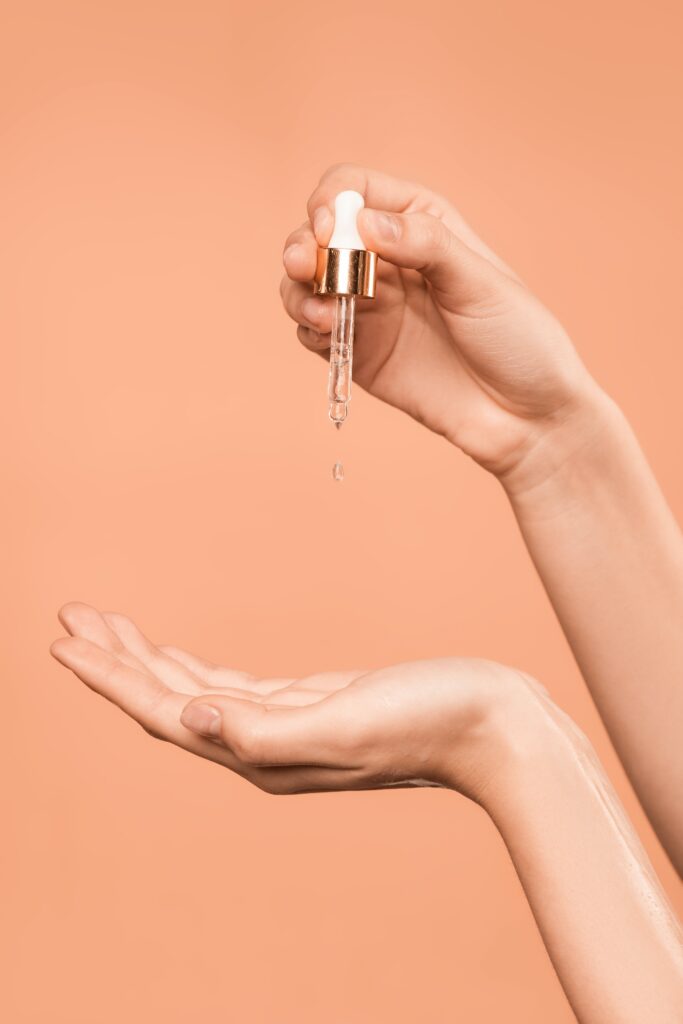
Makeup and Skincare Products
Choosing the right makeup and skincare products is essential for managing oily skin. Opt for products that won’t clog pores or add additional oil to your skin.
Non-Comedogenic Makeup
Look for makeup labeled “non-comedogenic,” meaning it is formulated to not clog the pores. Non-comedogenic makeup products can help prevent breakouts and keep your skin looking fresh throughout the day.
Avoiding Heavy and Greasy Products
Avoid heavy, oil-based foundations or thick creams, as they can contribute to excessive shine and clogged pores. Opt for lightweight, oil-free products that allow your skin to breathe while still providing the desired coverage.
Choosing Water-Based Cosmetics
Water-based cosmetics are an excellent option for oily skin, as they are less likely to contribute to an oily complexion. These products are formulated with water as the primary ingredient, making them lightweight and easier to blend into the skin.
Reading Product Labels
When choosing skincare or makeup products, always read the labels and look for keywords like “oil-free,” “non-comedogenic,” or “suitable for oily skin.” This ensures that the products you are selecting are specifically designed for your skin type and won’t exacerbate oiliness or contribute to breakouts.
Skincare Routine
Establishing a consistent skincare routine is crucial for managing oily skin effectively. Incorporate the following steps into your daily and weekly routine:
Daily Cleansing and Toning
Cleanse your face twice a day, in the morning and evening, using a gentle cleanser specifically formulated for oily skin. Follow up with a toner to remove any remaining traces of dirt or oil and help balance the skin’s pH levels.
Weekly Exfoliation and Masking
Exfoliate your skin two to three times a week using a gentle exfoliant to remove dead skin cells and unclog pores. Additionally, apply a clay mask once a week to draw out impurities and regulate oil production. Remember to follow with a hydrating moisturizer to replenish moisture levels.
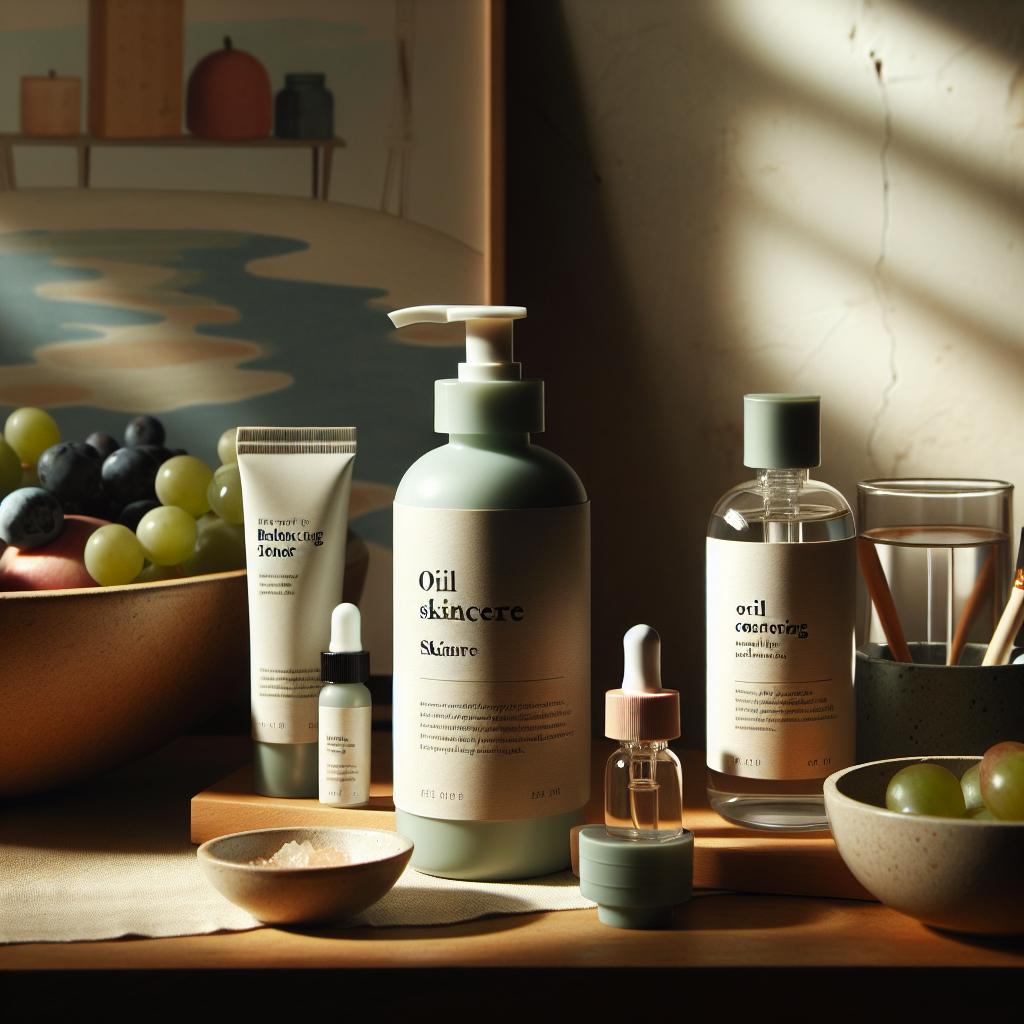
Professional Treatments
In some cases, incorporating professional treatments into your skincare routine can provide additional benefits for managing oily skin. Consult with a dermatologist or skincare professional to determine which treatments are suitable for your specific needs.
Facials and Extractions
Facials and professional extractions can help clear out clogged pores, reduce oiliness, and improve the overall texture of the skin. A skilled esthetician can perform extractions safely and effectively without causing further damage to the skin.
Chemical Peels
Chemical peels involve applying a solution to the skin that causes the top layers to slough off, revealing fresher, smoother skin underneath. Chemical peels can help control oil production and improve the appearance of acne scars or hyperpigmentation.
Microdermabrasion
Microdermabrasion is a non-invasive procedure that uses a device to exfoliate the top layer of skin, removing dead skin cells and stimulating collagen production. This treatment can help reduce oiliness, refine the skin’s texture, and minimize the appearance of scars or fine lines.
Laser Treatments
Laser treatments, such as laser resurfacing or intense pulsed light therapy, can target oil-producing glands, reducing their size and controlling sebum production. These treatments also help improve overall skin tone and texture while minimizing the appearance of acne scars.
Common Mistakes to Avoid
To effectively manage oily skin and prevent breakouts, it’s important to avoid these common mistakes:
Overwashing and Over-Exfoliation
While cleansing and exfoliating are essential steps, overdoing it can strip the skin of its natural oils and disrupt its balance. Stick to a gentle cleansing routine and limit exfoliation to two or three times a week to prevent irritation and excessive sebum production.
Using Harsh and Drying Products
Harsh, alcohol-based products may initially make your skin feel less oily but can ultimately lead to more oil production as the skin tries to compensate for the dryness. Opt for gentle, pH-balanced products that are specifically formulated for oily skin.
Skipping Moisturizer
Even oily skin needs moisturization to maintain a healthy moisture barrier. Skipping moisturizer can actually cause the skin to produce more oil to compensate for the lack of hydration. Opt for lightweight, oil-free moisturizers that are formulated for oily or combination skin.
Picking and Touching the Face
Constantly touching or picking at your face can transfer bacteria and oil from your hands to your skin, leading to breakouts. Try to avoid touching your face throughout the day and resist the temptation to pop any pimples. Instead, treat them with targeted acne treatments.
Taking the time to understand oily skin and implementing a comprehensive skincare routine can help you effectively manage oil production and prevent breakouts. By choosing the right cleansers, moisturizers, and skincare products, as well as adopting a healthy lifestyle, you can achieve a balanced and radiant complexion for years to come. Remember to be consistent and gentle with your approach, and don’t hesitate to seek professional advice when needed. Here’s to healthy, vibrant skin that shines for all the right reasons!
